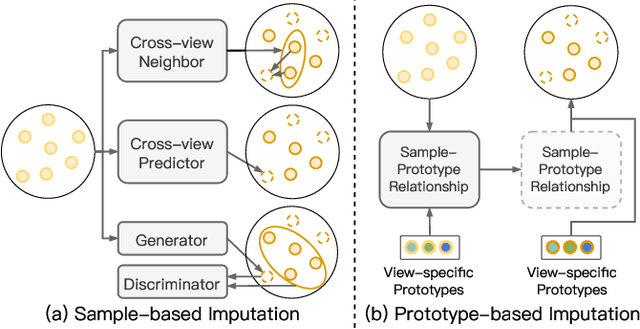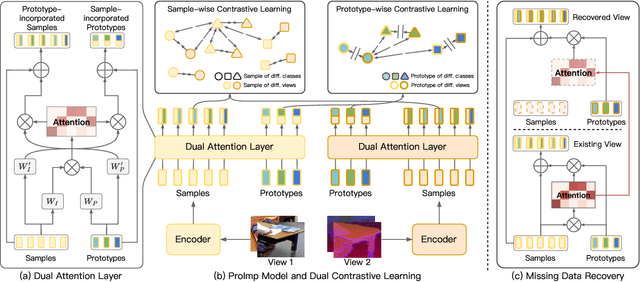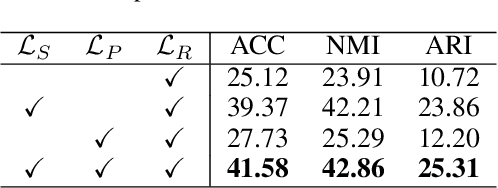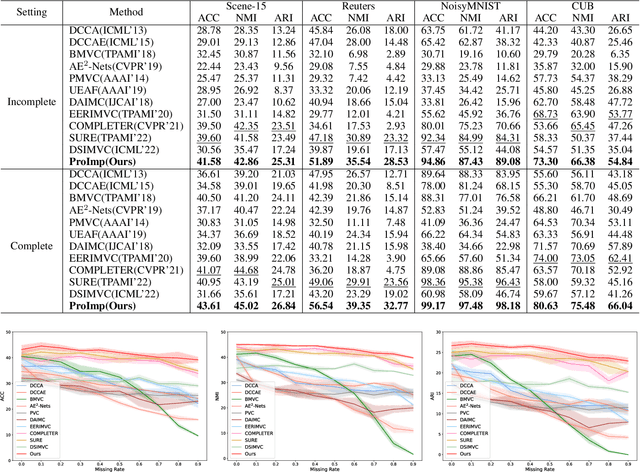Haobin Li
Test-time Adaptation for Cross-modal Retrieval with Query Shift
Oct 21, 2024



Abstract:The success of most existing cross-modal retrieval methods heavily relies on the assumption that the given queries follow the same distribution of the source domain. However, such an assumption is easily violated in real-world scenarios due to the complexity and diversity of queries, thus leading to the query shift problem. Specifically, query shift refers to the online query stream originating from the domain that follows a different distribution with the source one. In this paper, we observe that query shift would not only diminish the uniformity (namely, within-modality scatter) of the query modality but also amplify the gap between query and gallery modalities. Based on the observations, we propose a novel method dubbed Test-time adaptation for Cross-modal Retrieval (TCR). In brief, TCR employs a novel module to refine the query predictions (namely, retrieval results of the query) and a joint objective to prevent query shift from disturbing the common space, thus achieving online adaptation for the cross-modal retrieval models with query shift. Expensive experiments demonstrate the effectiveness of the proposed TCR against query shift. The code will be released upon acceptance.
A Survey on Deep Clustering: From the Prior Perspective
Jun 28, 2024Abstract:Facilitated by the powerful feature extraction ability of neural networks, deep clustering has achieved great success in analyzing high-dimensional and complex real-world data. The performance of deep clustering methods is affected by various factors such as network structures and learning objectives. However, as pointed out in this survey, the essence of deep clustering lies in the incorporation and utilization of prior knowledge, which is largely ignored by existing works. From pioneering deep clustering methods based on data structure assumptions to recent contrastive clustering methods based on data augmentation invariances, the development of deep clustering intrinsically corresponds to the evolution of prior knowledge. In this survey, we provide a comprehensive review of deep clustering methods by categorizing them into six types of prior knowledge. We find that in general the prior innovation follows two trends, namely, i) from mining to constructing, and ii) from internal to external. Besides, we provide a benchmark on five widely-used datasets and analyze the performance of methods with diverse priors. By providing a novel prior knowledge perspective, we hope this survey could provide some novel insights and inspire future research in the deep clustering community.
Incomplete Multi-view Clustering via Prototype-based Imputation
Jan 30, 2023



Abstract:In this paper, we study how to achieve two characteristics highly-expected by incomplete multi-view clustering (IMvC). Namely, i) instance commonality refers to that within-cluster instances should share a common pattern, and ii) view versatility refers to that cross-view samples should own view-specific patterns. To this end, we design a novel dual-stream model which employs a dual attention layer and a dual contrastive learning loss to learn view-specific prototypes and model the sample-prototype relationship. When the view is missed, our model performs data recovery using the prototypes in the missing view and the sample-prototype relationship inherited from the observed view. Thanks to our dual-stream model, both cluster- and view-specific information could be captured, and thus the instance commonality and view versatility could be preserved to facilitate IMvC. Extensive experiments demonstrate the superiority of our method on six challenging benchmarks compared with 11 approaches. The code will be released.
 Add to Chrome
Add to Chrome Add to Firefox
Add to Firefox Add to Edge
Add to Edge